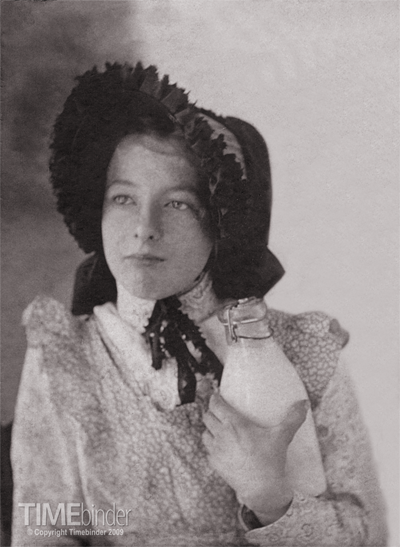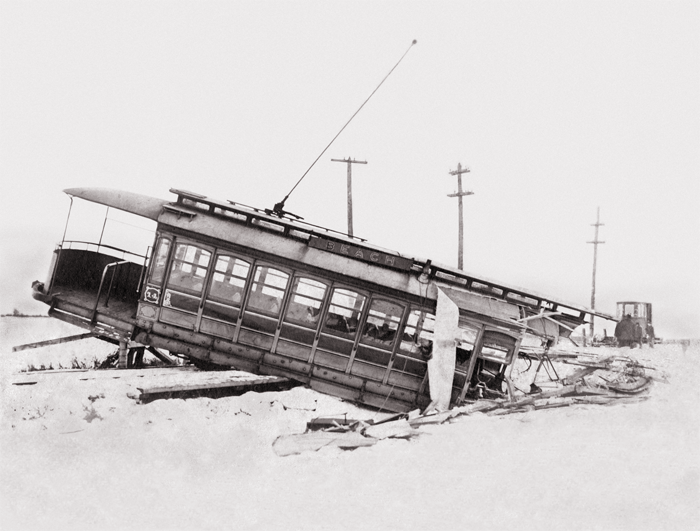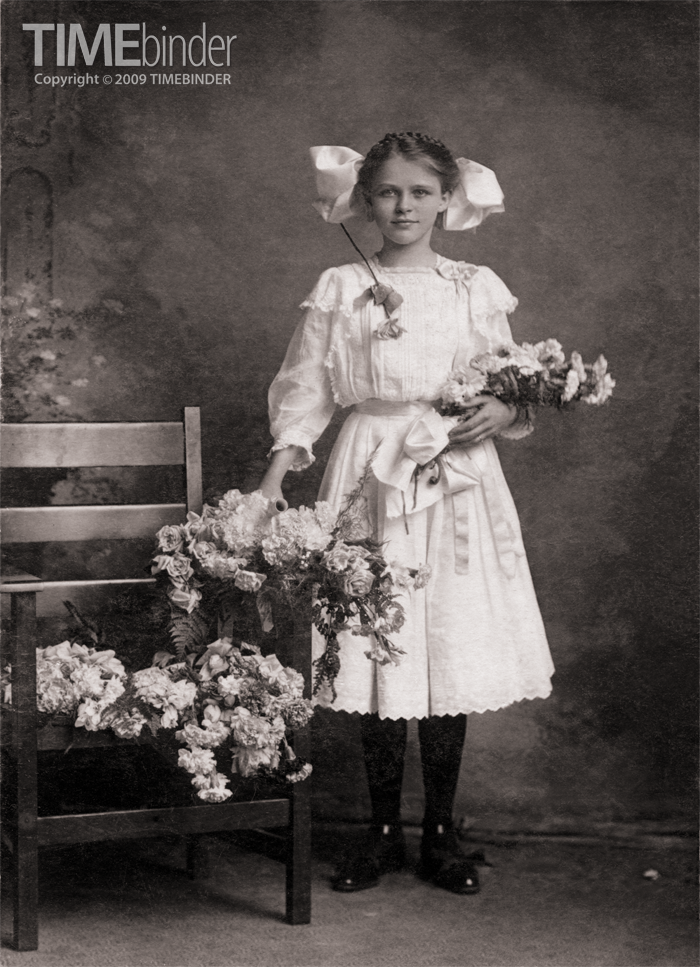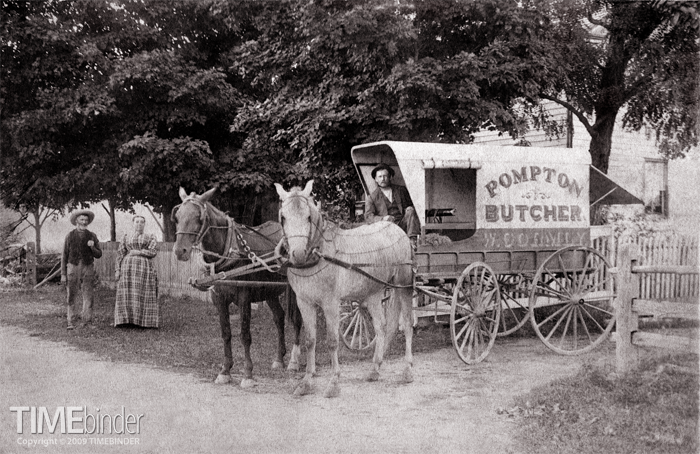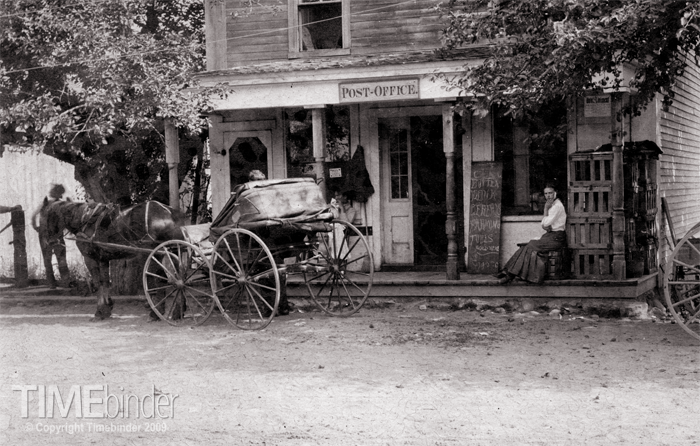
Every small community had to have a post office and a general store; they were so unremarkable a part of the scene all across the country that it would seem that only a proud proprietor or a very idle photographer would bother to shoot and print it, yet they are to be found aplenty from the very upscale to the modest to the ramshackle (I’m a sucker for commercial establishments as you will continue to discover at Timebinder).
Most often you will see the name of the store prominently displayed with Post Office tacked on somewhere for official information; sometimes, as here, Post Office is the signboard and the fact that it is also a store seems so obvious that signage is not considered worthwhile. Though residents would not have thought of it in these terms, you might as well put up a sign with Community Center on it, for that was what they were. When telephone service became available to a rural community, the first and only phone may have been here – it was communication central anyway.
A battered barouche is parked in front, a man lounges on the porch, a small blonde girl with bow in her hair stands with her back to us, a young lady is seated away from the others, her hand on her chin, staring with undisguised curiosity at the photographer. There is a man having a conversation with another man whose hand is just visible on the post between them.
Heavy crates, perhaps for chickens, are stacked at one end; a board leaning against the wall has this mixed list of wares chalked on it: butter, flour, cereals, farm tools sold here – then as an afterthought, eggs (20 cents?). A broom rests against the doorway which is not divided evenly but has a normal-sized panel open for general traffic and a narrower panel that could be opened to provide extra width when needed. The door at far left may have been the entrance to living quarters upstairs. In the window is a small sign advertising Moxie (Soda), a popular slightly bitter, slightly sweet cold beverage flavored with gentian flower and advertised as Nerve Food; it originated in Maine, was an alternative to Coke, and it is still available today. There is a sign for Pain Lineament at right.
This small snapshot (we commonly use the term to mean “informal photo” or even “brief summary”) is rural Main St., Anywhere, USA. It was not taken by a professional: the upper part of the store has been cut off and quite literally half the image was dirt road in the foreground (which I have cropped).
 Monday, June 8, 2009 at 1:00PM
Monday, June 8, 2009 at 1:00PM 